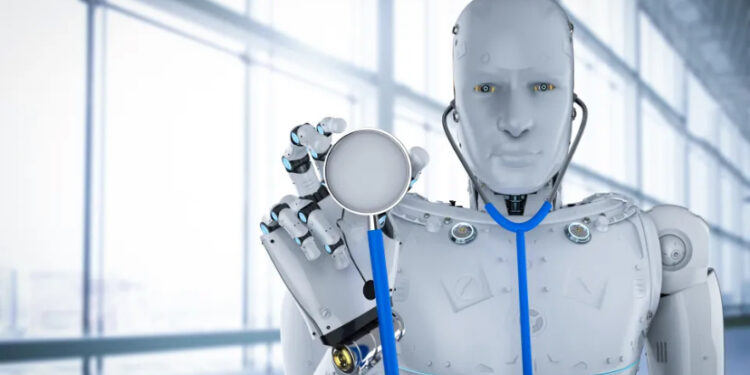The futuristic medical care is expected to lead to the cultivation of ‘highly-skilled doctors’
THE world’s first AI hospital where robot doctors can treat 3,000 patients a day has been unveiled in China.
Dubbed “Agent Hospital”, the virtual facility will have the potential to save “millions” through its autonomous interaction.
Developed by researchers from Tsinghua University in Beijing, the AI hospital is so advanced that it already aims to be operational by the second half of 2024.
Six months of research and development means the hospital is nearing readiness for practical application, where it is set to transform the way doctors diagnose and treat patients.
Research team leader of the Agent Hospital, Liu Yang, said the AI hospital will bring immense benefits to both medical professionals and the general public, Global Times report.
Thanks to its simulated environment and ability to autonomously evolve, AI doctors will be able to treat up to 10,000 patients within a matter of days.
Read more in Chinese Tech
To put this into perspective, it would take at least two years for human doctors to achieve the same numbers.
Tests conducted by Chinese researchers have already shown AI doctor agents achieve an impressive 93.06 percent accuracy rate on the MedQA dataset (US Medical Licensing Exam questions).
Covering major respiratory diseases, the virtual medical professionals were able to simulate the entire process of diagnosing and treating patients.
This included consultation, examination, diagnosis, treatment and follow-up processes.
The virtual world will see all doctors, nurses and patients driven by large language model-powered intelligent agents.
The role information for the AI doctors can also be “infinitely expanded”, the report adds.
For now, a configuration of 14 doctors and four nurses are on hand to deal with the demand of patients.
The 14 doctors are designed to diagnose diseases and formulate detailed treatment plans, while the four nurses focus on daily support.
Bringing the AI hospital into the real world means medical students can be provided with enhanced training opportunities.
Proposing treatment plans without the fear of causing harm to real patients will allow them to practice in a risk-free environment.
This will ultimately lead to the cultivation of “highly-skilled doctors,” according to Liu.
When the roles are reversed, whereby the doctors are virtual and the patients are real, online telemedicine services can be provided.
According to the report, this would allow AI doctors to handle thousands, or even “millions”, of cases.
Liu adds that the AI hospital can even predict the spread, development and control of infectious diseases in a region.
Another motivator behind the AI hospital is creating affordable care for the public.
As diagnostic capabilities of AI doctors translate through to the real world, it brings with it high-quality, affordable and convenient healthcare services.
As with any new idea, however, it carries with it a number of challenges.
To ensure that AI technology does not pose a risk to public health, strict adherence to national medical regulations is required.
On top of that, thorough validation of technological maturity and the exploration of mechanisms for AI-human collaboration are also essential.
The dangers of AI
By Tom Malley
Artificial Intelligence has been hailed as a remarkable, revolutionary process that could change the world.
However, whether that is for better or for worse remains up for debate.
Tesla and SpaceX found Elon Musk urged in a letter last year that large AI experiments should be paused with immediate effect, citing that the technology can “pose profound risks to society and humanity”.
While AI has ben brought in to do all the right things, there are certainly plenty of the wrong things to be wary of.
With the help of tech website BuiltIn, here is a list of the main dangers of AI.
- Automation-spurred job loss
- Deepfakes
- Privacy violations
- Algorithmic bias caused by bad data
- Socioeconomic inequality
- Market volatility
- Weapons automatization
- Uncontrollable self-aware AI













Discussion about this post